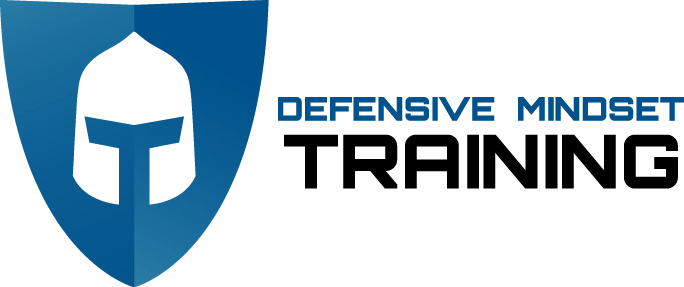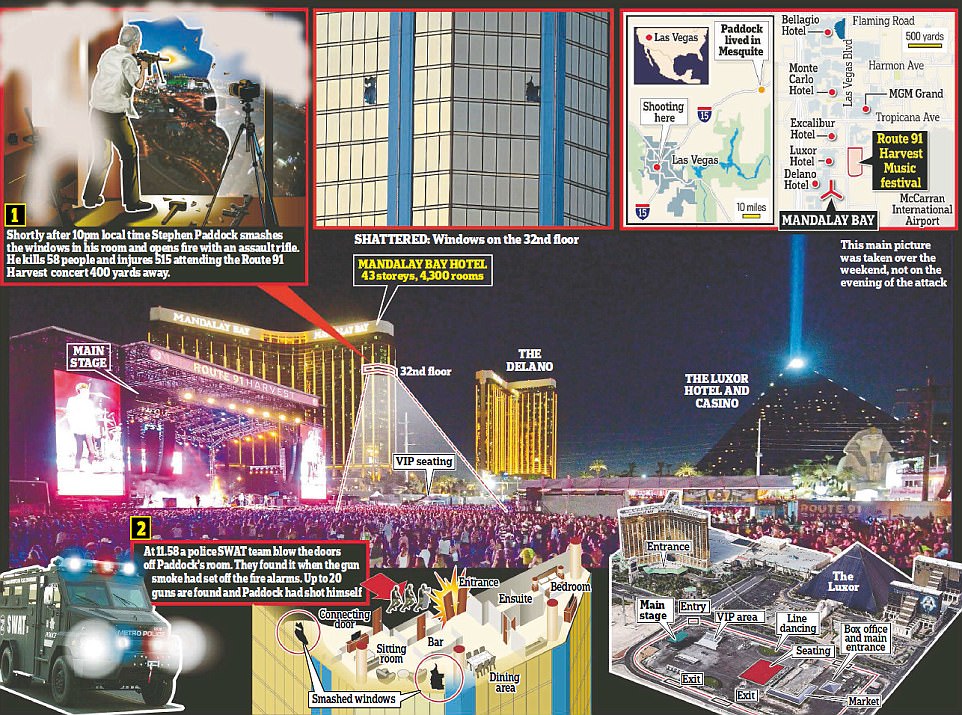What a rough week.
The more news that comes out about the October 1st's massacre in Las Vegas, the worse it gets.
Before launching into the serious details, I don't want to forget the positive - that in the face of this tragedy, so many stories of heroism and courage have come out that you could fill several books with simply the tales of American helping American. If you'd like to read just some of these inspirational tales, check it out here.
When you're ready, let's review the tactics that the killer used and think about how we might strategically deal with them from a Citizen Defender perspective.
Several articles have done an impressive job of connecting what we currently know to graphics and gif videos. There's one from the New York Times, and there's another fromThe Daily Mail that is just massive. I've also summarized it below.
The killer had 23 firearms in his 32nd floor Mandalay Bay room. He established two separate shooting positions so he could adjust his position in relation to the movement of targets and line of sight to increase his kill count. At least one of his firearms was equipped with a bump-fire device that uses the physics of the rifle's recoil to simulate fully automatic fire cyclic rates. You can see a video of how that works here.
When the killer was ready to begin, he used a mini-sledge hammer to break through the glass at his two pre-designated firing positions and then commenced firing on the crowd. It wasn't until the second burst of gunfire that those in attendance realized they were under attack.
Once that realization hit, the crowd scattered in multiple directions. In the midst of the throng, many would have been trapped by other people and perhaps even crushed by their fellow concert goers.
After some time, hotel security and then law enforcement brought pressure on the killer who took his own life, ending the massacre. You can see some of that here, but be ready, it's graphic.
Defensive Actions
After chatting with several SMTers over the last few days, an interesting trend emerged. Each of them began processing this event the same way: there was a moment of "holy crap" and then there was an immediate thought process of what to do.
That process of what to do was the exact same one that we teach in every training session: The Plan of Action. In a crisis, many people freeze up or wait on instructions as their mind processes what's going on, but these SMTers had trained so they'd be immediately prepared to act in a thoughtful, functional manner.
So for this Weekly Training Newsletter, I'm going to take you through The Plan of Action so you can start practicing it.
The Plan of Action was designed to be short, easily learned, and immediately applied. The principle of learning this plan ahead of time is that when we suffer the effects of a Physiological Response to Stress, including the dump of epinephrine and the loss of cognitive thought and rationing. This means you don't have time to "come up" with a plan - you need to start taking action. Now.
By memorizing The Plan of Action and practicing it in your daily life, when that dangerous crisis occurs you won't have to think of what to do, you'll simply respond.
The Plan of Action
- Create Distance
- Introduce a Barricade
- Escape - Find Help - Get a better Defensive Tool
- Deter then Defend
Say that a couple of times, out loud. I honestly cannot stress this enough. If you learnNOTHING from these Weekly Training Newsletters but this, I'll feel I've added value to your life.
Now read The Plan of Action again.
Create Distance
This isn't a little distance. This is a lot of distance, if possible - every bit of distance that you can get from the kill zone will help you. In the military we train for incoming fire from mortars or artillery. When those rounds come in, someone in leadership will call a distance and a direction and everyone will run in that direction and then regroup. An Infantry squad can't shoot back at a mortar a mile away, they need to get out of the way as quickly as possible and that was the reality for those on the ground. In some ways, the Las Vegas attack was similar to this scenario.
Introduce a Barricade
Barricades can be Active or Passive. A passive barricade is something that makes the attack less likely due to social or situational issues, like talking to someone else on the street to prevent a mugging or a rape by an attacker looking for a lone victim. A passive barricade wouldn't have worked in this shooting situation, but an active barricade would have helped. An Active barricade makes it physically harder for the threat to reach you.
There are several pictures of people hiding behind chain link fences or other thin barricades that would not stop bullets. If you have the chance, look for the best barricade you can find. Remember that these barricades, or "cover," are not all created equal. With firearms you must remember that there is Cover - something that will stop the bullet, and Concealment - something that will only screen you from the sight of the shooter.
When going into public venues, try to identify these and note the difference. The engine block of a truck is cover. The cab is concealment. Noticing your options ahead of time will help you if a dangerous situation arises.
Escape - Find Help - Get a Better Defensive Tool
Escape: With the Las Vegas attack, escape is really pretty much the only option for the Citizen Defender. Part of escaping is finding escape routes. Stay in places that will allow you to remain mobile. Being in the middle of a crowd will definitely not provide you mobility, so I would recommend hanging out toward the edges instead of the crush of people. Also,look for EXITS everywhere you go AND give yourself permission to take that exiteven if it's outside social norms. If your life depends on it, you need to consider options like going over the railing where the stage is, and following the band off stage.
Find Help: In this situation, help is most likely going to come from responding Law Enforcement. The key here is that you must not be seen as being in any way involved in the attack. Ensure that Law Enforcement can see your hands and if possible, direct them to the shooter, if you happen to know where they're located.
Get a Better Defensive Tool: The best defensive tool possible for the Las Vegas attack would have been a few precision rifles and shooter/spotter teams. Hitting a target at 1000 feet (333 yards) would be quite easy for a good .308 rifle and a precision optic. 1000 feet with a handgun is really hard. Doable, but hard. Looking at these ballistic charts for the self-defense ammo that I carry, 124gr. Federal Hydra-shock 9mm, there is a 15-foot drop at 350 yards. In essence that means that with a similar handgun, a Law Enforcement officer on the ground would need to aim at the floor above the killer to try to drop the rounds into the window. Like I said, doable, but hard.
For those of you who are scientifically-minded, check out the ballistic charts below for more information on how this works.
By the way, I think that you'll be seeing precision rifle shooter/spotter teams at these kinds of events from now on.
Deter then Defend
Deterrence is a set of physical and verbal actions that the defender can take to mentally convince the threat that you are too dangerous for them to continue the crime. With such a dedicated killer at such a distance, deterrence would have been entirely ineffective in this situation.
Had anyone, citizen or Law Enforcement, had the opportunity to place effective rounds on target to physically stop the attack, it would have been justified. When you're being attacked and you realize you have no other choice but to fight, you need to respond without hesitation. Remember that many who were shot lived - humans are incredibly resilient. Just because someone is shooting at you doesn't mean you can't fight back. If you find yourself in this kind of situation, never ever give up. Repeat to yourself: I will win. I will survive. I am never unarmed or incapable of providing aid.
With this defensive mindset, be prepared to take action, your life, and those around you will depend upon it.




